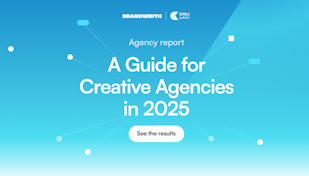
API-First: Headless execution and boosting creative output
One of the major benefits of the CHILI GraFx platform is how seamlessly it brings together all the systems and stakeholders in your creative process. Deep integration with every aspect of your MarTech stack is possible thanks CHILI GraFx’s API-first approach, and creative stakeholders can work 100% online thanks to fully customizable portal capabilities and an advanced suite of creative tools.
Watch CHILIpulse Episode 2 with Brian Roels, Chapter Lead at CHILI publish to learn a lot more about what an API-first approach offers in the full episode. The following blog offers an overview of highlights about how connecting CHILI GraFx with your existing tech stack boosts production and accelerates your delivery process.
What does API-first mean?
An API, or application programming interface, is an important aspect of software development, since it’s what allows different tools to “talk” to each other. Some companies choose to develop their API after building their software, but in an API-first approach to software development, the API is designed prior to other aspects of a tool.
What this means in practice is that the API is far more flexible and easy to maintain, which makes it much easier for the core of a piece of software to integrate with other tools. In the case of CHILI GraFx, connectivity with any tech stack and integration with other systems, like DAM, PIM and DX systems, is paramount to allowing agencies and brands to scale their creative output.
So what does an API-first development process look like in action for CHILI GraFx? It starts with the stakeholders. By involving front-end and back-end stakeholders at the start, API connectivity no longer becomes an “afterthought” in software development, and can actually form the backbone for development.
API vs SDK
With an API, developers don’t need to understand everything “under the hood” when it comes to implementation. The API itself sits server-side and provides certain protocols that make it easier to share data between multiple applications.
SDKs, or software development kits, involve APIs, as well as a few other tools that help developers create applications and pieces of software that work with the software itself — in this case, CHILI GraFx. An SDK may include documentation and certain libraries in addition to the API itself, and is hosted by the user (client), hence “client-side”.
When it comes to CHILI publish’s approach to using APIs and SDKs, an API-first process results in a much clearer structure for the end-user. This is because specific data calls have specific controllers (for example, for media or fonts) that allow for a more organized approach to development with the API. You can check our updated SDK documentation for integrators working with CHILI GraFx.
How to run a headless, API-first Creative Automation process
When running a headless Creative Automation process, you need to have an API you can trust. This is because without the knowledge that your API is going to effectively communicate with each and every platform in your MarTech stack, you can’t trust that the content you’re generating will properly scale across all destinations and platforms.
As mentioned in today’s CHILIpulse episode, “if you want to run a batch of renders overnight” you need to be able to do that without a front-end connection that necessitates a user clicking on something a 1,000 times. By connecting with the API from CHILI GraFx, it is possible to automate certain tasks and reduce the need for human intervention — thus creating a headless process for automation.
What does this all look like in practice?
As shown in the video, an API and SDK running simultaneously client-side allow for various calls to be made using JSON. In his demo, we move the image of a bottle to the left and then is able to find exactly what elements that front-end decision impacted on the back-end code.
You can better visualize what this actually looks like for the client by watching it in action on video.
Understanding API and server-side calls
Using a tool called Swagger in the CHILI GraFx API, it’s easy to execute server-side calls. Part of this comes from how organized each call is. For example, in the environment API, calls are catergorized into buckets like Fonts, Media, Templates, Output calls, and health calls, which are status checks.
By simply clicking on a category, you can see the calls available. In the case of Media in the environment API, for example, there are a variety of “Get” calls, with descriptions explaining exactly what that call achieves. All of this makes it much easier to design an application that works with CHILI GraFx, since you know exactly what calls are available to utilize in your own software development.
The impact on developers
For developers and agencies alike, being able to visualize the front-end while seeing how certain topics are manipulated to achieve those results has major advantages for developers. First and foremost, it makes testing and finding bugs much simpler, since it takes the guesswork out of debugging by allowing you to quickly identify which snippets of code are affected.
As you can see, the plug-and-play connectivity offered by an API-first tool like CHILI GraFx ensures that at every step of your creative process you can get the most out of CHILI’s Creative Automation suite. An open architecture allows designers, agencies, and brands to do more than just use these tools in their existing software ecosystem. With CHILI GraFx, custom solutions for each and every in-house need your business may have are simplified, too.
Stay up to date on CHILI GraFx developments on Github.


